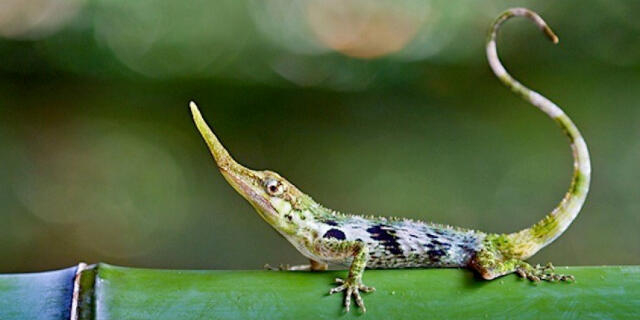The long-nosed lizard from Ecuador was first found in 1953, when scientists captured nine specimens of the Anole, all male. Over the next few years, a handful of the lizards were spotted. But then there were no sightings for 40 years.
Anolis proboscis has a total body length (excluding tail) of roughly 50-75 mm. Males possess a conspicuous proboscis, an elongated structure arising from the middle of the snout and about 10-20 mm in length; it appears to be used in courtship displays, as is the dewlap that is present in both sexes. There appear to be several color morphs, with coloration ranging from yellowish-green to brown with orange or black markings, and generally a white belly.
Based on the few localities known, Anolis proboscis inhabits mountain forest habitats, where it lives on high trees. Specimens have predominantly been found in primary and secondary vegetation along a well-traveled dirt road. Only five localities in total are currently known, with a maximum distance of 13 km between the two furthest ones. While the area of occurrence includes pasture land and secondary forest, it is likely that the species also occurs in other mid-altitude (1,200-1,650 m) areas in the Ecuadorian Andes.












